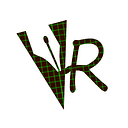As VR adoption grows, so will the market for VR productivity software.
VR is a platform for creatives and engineers alike to work at their best by detaching from real world constraints.
In virtual reality a writer may choose to write on a mountain top with a light breeze, all while sitting in their home office. A painter may paint in a perfectly black room, unaffected by a distracting backdrop. A programmer can place monitors and terminal windows all around 3D space in the midst of a star field, disconnected from the beige walls of their cubical.
We can choose the aesthetics that surround our work space, but it takes time and resources to build an effective space.
Virtual reality changes this.
No longer are writers, actors, politicians, entrepreneurs, or hobbyists limited to the physical times and places they practice. Virtual reality provides a platform to build experiences that increase focus, reduce distraction, provide feedback, cultivate inspiration, or just simulate the outside world in the comfort of your living room.
As VR adoption grows, so will the market for VR software that aids users in living more productive, healthy, and fulfilling lives.
VR Fitness is an easy first example, but we can also look to programs like Speech trainer or SoundStage for creating spaces where users can practice a given set of skills. VR might just become the most useful tool ever invented for enhanced learning.
The ability for VR to block out your major perceptions of reality, visual and audio, makes it an excellent tool for reducing real world distractions.
Companies and people pay for training programs every day. A well designed VR experience can act as an effective training program, capable of adapting to user needs, all the while scaling beyond what a single coach or team of consultants is capable of.
Those productive dreams you’ve had? VR could make some of them a reality.
This is post 50 of my 90 VR experiment. Follow me for a dose of virtual reality design, gameplay, speculation, and adventure.
